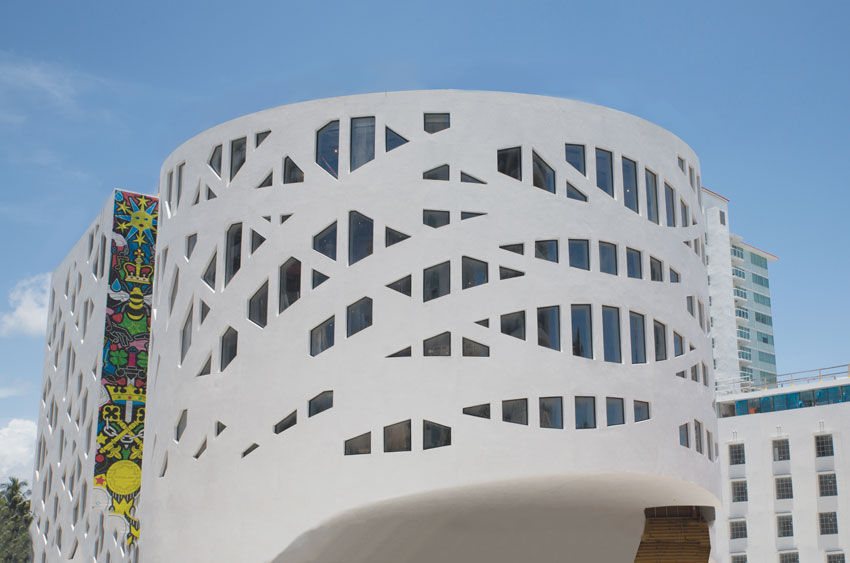Twenty-First Century High-Performance Limestone Plaster
Learning Objectives:
- Define high-performance limestone plaster cladding and compare its historic use in Europe to modern performance criteria.
- Describe the environmental and durability benefits of using this material for strength, moisture control, defenses against mold, mildew, breathability (perm rating), and air permeance.
- Evaluate the use of this exterior cladding as part of a project attaining a green building rating that requires materials to be in compliance with the USGBC’s REACH legislation documentation and those that have published Health Product Declaration Open Compliance Standards.
- Explain why this material requires no control joints when applied to a mass wall, providing a new alternative for designers choosing smooth, monolithic exterior finishes.
- Discuss the advantages of using an integrally colored stone material that requires no painting or recoloring and can be matched for additions or renovations.
Credits:
The aesthetics and performance of an exterior material are prime elements that every design professional investigates when selecting an exterior finish. For those who are seeking environmental benefits, materials must meet high-performance attributes, particularly in the areas of energy savings, moisture control, and material components that are not harmful to the environment. It may be surprising that architects are discovering that a new material with environmental performance values that exceed codes is also an ancient material. High-performance limestone plaster, or HPLP, is a new term for an ancient material composed of natural hydraulic lime, hydrated lime, and elongated sand. Through research, third-party testing, and quality controls, HPLP exterior cladding is available using the same materials as historic high-performance lime plasters.

Photo courtesy of Thermocromex
The architect achieved a smooth, monolithic exterior at this art center in Miami by selecting a high-performance limestone plaster cladding.
Architects are using this product to achieve the highest of environmental building ratings in contemporary architecture and as a material that radiates light and permanence, while providing energy savings, moisture control, breathability, and strength.
Raw Materials Matter: Unique St. Astier Lime
To get the quality needed to meet the durability, breathability, and flexibility required for use at the renovation of the Michigan State Capital, preservation architect Eugene C. Hopkins, FAIA, principal at HopkinsBurns Design Studio, chose a hydraulic lime plaster from St. Astier in France. He recommended the use of lime plaster because it is an authentic and proven material, saying, “We tested the original plaster and mixed the same ratios of sand and lime using a three-coat application. We also installed horsehair in the brown coat. The previous system lasted for 100 years so why mess it up?” Preservationists choose lime from St. Astier because of its unique geologic location. The purity of hydraulic lime from St. Astier guarantees a product that provides high-performance environmental benefits. The Louvre, Westminster Castle, and Notre Dame are just some of many famous buildings that were constructed using St. Astier lime.
The lime deposits at St. Astier are located between the French cities of Montaceix and Neuvic sur l’Isle (approximately 6.2 miles). This geological layer is more than 328 feet thick. It was formed during the Upper Cretaceous period (approximately 75 million years ago) by marine sediment (mostly crustacean and corals). The sea in the basin was not subject to severe currents, and this allowed the formation of a uniform and undisturbed layer of calcareous rock infiltrated mainly by silica, with insignificant traces of other elements. This characteristic of the rock is unique in Europe and is the reason why the lime used for historic preservation is so reliable. It has the highest concentration of lime without any impurities. Archeological evidence shows that since the time of the Romans, this lime was used in buildings. In 1833, Louis Vicat, a French engineer and authority in hydraulic limes, began industrial production of the lime at St. Astier for use all over the world.1
Fast forward to the 21st century and to architects who want to choose this high-performance historic material without the labor-intensive applications with horsehair brushes, multiple coats, and long drying times. HPLP is manufactured with strict product control of the materials that include lime and sand components. It can be applied in one coat, sprayed onto a variety of substrates in a one-coat finish with quick drying times. The basic components of high-performance limestone plaster include:

Photo courtesy of Thermocromex
Limestone plaster was directly applied to new CMU and existing precast concrete along with frame/sheathing wall assemblies to achieve uniformity in texture and color at the Dallas Fort Worth International Airport (DFW).
Hydrated Lime
Limestone is a calcareous rock that is extracted from the St. Astier quarry and crushed to create quicklime. During a highly controlled production process, water is added to create hydrated lime. A calcareous rock is a term used to identify a sediment, sedimentary rock, or soil type that is formed from, or contains a high proportion of, calcium carbonate in the form of calcite or aragonite.
The properties of lime make it a strong contender as a “miracle” building product. These include: “cohesion, adhesion, air content, water content, crystal shape, board life, spreadability, and flowability; bond strength; comprehensive strength; setting time; sand-carrying capacity; hydrolocity; free lime content; vapor permeability; flexibility; and resistance to sulfates. These qualities are affected by many factors during each step of manufacturing and installation. These include the original ingredients of the source of lime; added ingredients before and during firing, including inclusion of compounds from the fuel exhaust; firing temperature and duration; method of slaking, including a hot mix (quicklime added to sand and water to make mortar), dry slaking, and wet slaking; ratio of the mixture with aggregates and water; the sizes and types of aggregate; contaminants in the mixing water; workmanship; and rate of drying during curing.”2
Natural Hydraulic Lime
Hydraulic lime is the product of burning and slaking limestone. Natural hydraulic lime, or NHL, refers to the hydraulic properties of the selected lime product as a raw material with no additions, such as cement. The 21st century production process for HPLP is essentially the same as the one used since ancient times. The scientific knowledge of the manufacturer and modern quality control have, however, the favorable effect of producing reliable materials with constant performance. The method and the energy used in the burning process are the determining factors in the quantity of silica that combines with calcium oxide (CaO) to form calcium silicates (CS). This produces the environmental and durable performance of the finished products. Burning takes place in vertical kilns at temperatures not above 1,832 degrees Fahrenheit (1,000 degrees Celsius). The most efficient fuel with the least residuals is a high-quality anthracite coal imported from Wales and used at St. Astier. Continuous checks are made to measure the efficiency of the burning (CO2 tests), which are essential to regulate the hydration that follows. Hydration or slaking is a controlled hydration process. This process is so precise that virtually no quick lime (less than 1 percent) or impurities will be present at the end.
The European Union EU norms (EN/BS 459.1/2/3) on hydraulic lime state that natural hydraulic lime is the product of burning and slaking limestone. High-performance lime mixes should not contain any additions, such as pozzolans, gypsum, air entrainers, ash, or cement. The American standard, ASTM C-141: Standard Specification for Hydrated Hydraulic Lime (HHL) for Structural Purposes, provides guidance as to the required compressive strength of lime.
The compressive strength and hardness of natural hydraulic lime should meet numerous test standards listed in the chart at the end of this article. Natural hydraulic limes are workable, flexible, compatible with other components, and strong.3
Elongated Silica Sand
Elongated, not round sand, is mixed with the natural hydraulic lime to create a finished product with approximately 30 percent voids (versus 5 percent in cement-based finishes). Elongated sand is the key to making this product breathable with high permeability ratings.
Integral Color and Whiteness Factors
Limestone plasters can be selected with nonfading pigments. These mixes provide a controlled, integral color, which can be guaranteed to be consistent over all bags ordered. The color mixes are automated to record every batch so that future additions or renovations can be specified to match the original product. They are composed of eco-friendly, inorganic pigments integrated into the product that do not require a finishing color coating.
St. Astier is a quarry and a manufacturer that has operated more than 150 years. There are many different types of lime products. Design professionals can order lime mixes that can be used for sea walls and those with lower grades or untested grades of hardness. The purity of the components is important to assure strength and safeguard against efflorescence in the wall surface. Knowing the difference in lime mixes allows the design professional to specify a high-performance mix that achieves the environmental benefits of HPLP.










